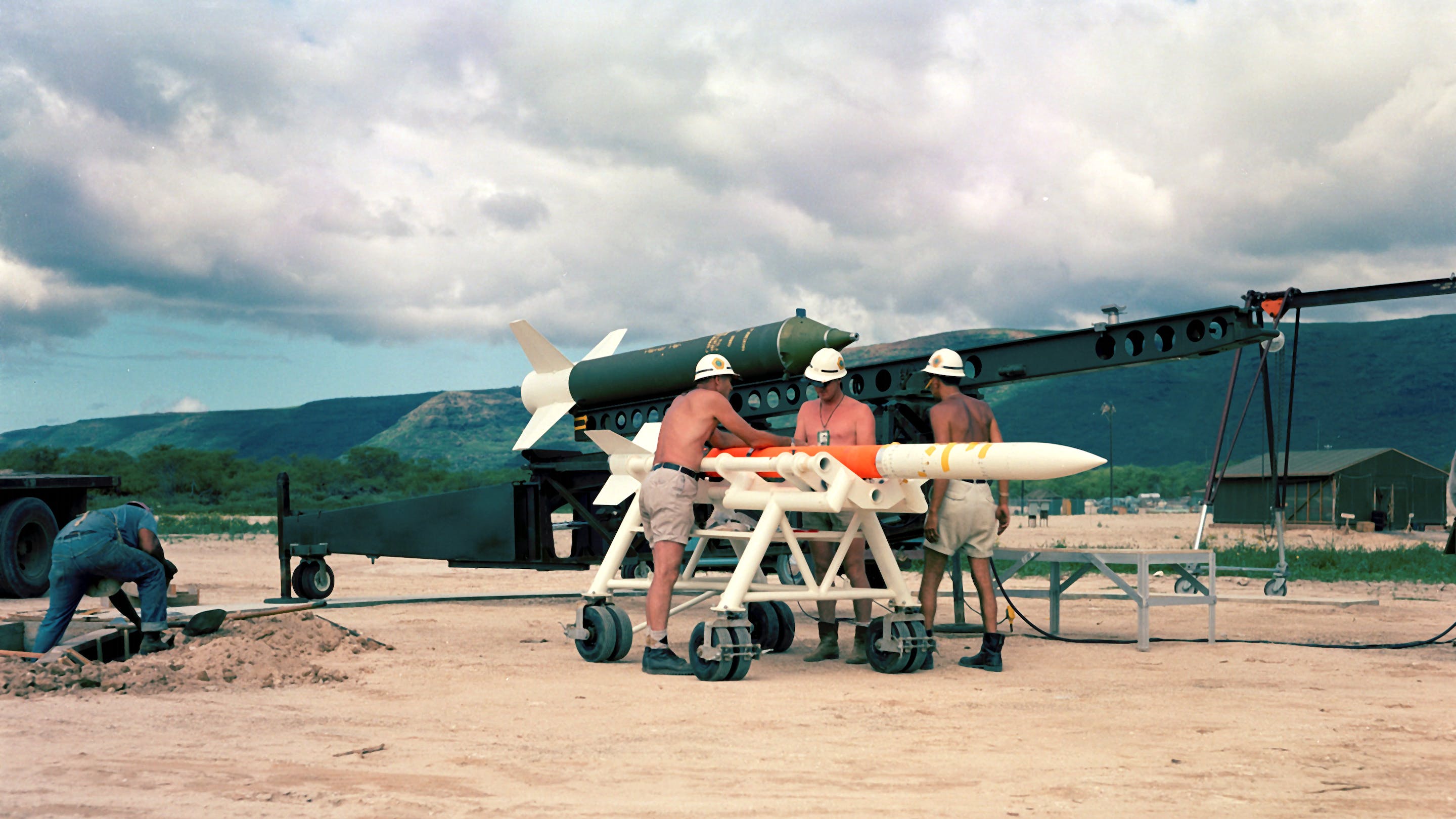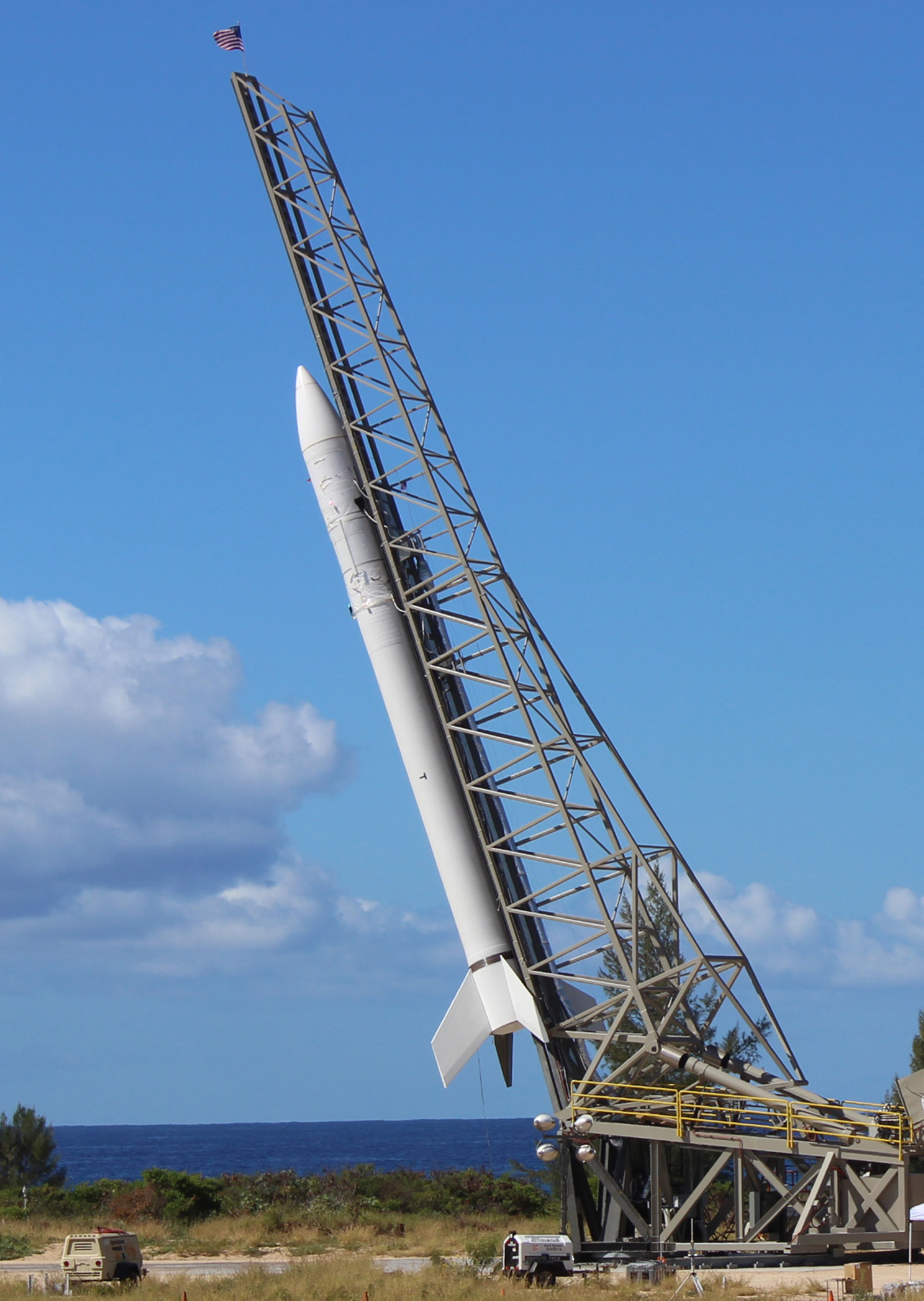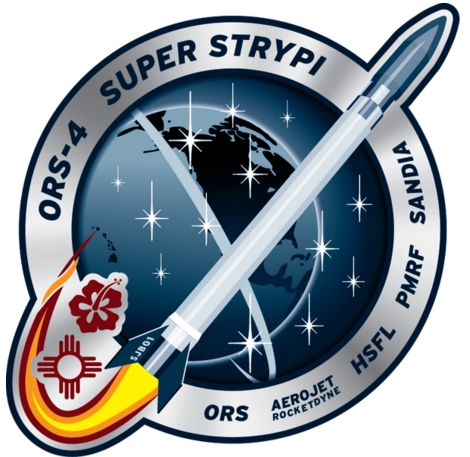Winston
Lorenzo von Matterhorn
- Joined
- Jan 31, 2009
- Messages
- 9,560
- Reaction score
- 1,749
Estes' new Doorknob kit of an instrumented rocket used during Operation Hardtack got me looking for other instrumented rockets used during nuke tests.
https://prod-ng.sandia.gov/techlib-noauth/access-control.cgi/2017/178978r.pdf
For Hardtack, SNL developed the Doorknob rocket system to carry diagnostic instrumentation and to gather radiochemical samples during the high-altitude nuclear test shots (the Teak and Orange events). Six SNL-developed radiochemical samplers and nine diagnostic Doorknob payloads were launched from Johnston Atoll during Hardtack. The systems captured weapon effects data, atmospheric physics data, and meteorological data.
Referred to as Operation Doorknob, SNL’s development activities included both air releases and ground launches to test systems. Testing encompassed both rocket systems and payloads, including recovery systems.
To support ground-launched tests, SNL created a rocket launch capability in Area 9, northeast of the main target at TTR (Figures 1 and 2). The facilities constructed by REECo during the summer of 1957 included two rocket launchers (Launcher 1 and Launcher 2), an air-building for assembly activities, and the Observation Bunker (Building 09-50), identified as the Blockhouse in early drawings and documents.
With the initial testing completed for Doorknob, rocket research and development continued in 1959, with a new high-altitude sampler rocket system introduced in 1960. The new system was not used in nuclear testing right away due to the moratorium the U.S. and USSR established in 1958. The test moratorium remained in effect until 1961. The new SNL-developed rocket system was used in the 1962 Fishbowl high-altitude shots of the Operation Dominic nuclear test series. The system provided recoverable payloads for weapon diagnostics, nuclear debris sampling, and meteorological data.

A Crimson Fracture in the Sky
A collection of images, some never seen before, of atmospheric nuclear-weapon detonations—the last such tests done before the United States moved its efforts underground.
https://www.topic.com/a-crimson-fracture-in-the-sky
Preparation of rocket carrying test instruments, Kauai, Hawaii, June 29, 1962 (Nike-Apache?):

SPARK (rocket)
https://en.wikipedia.org/wiki/SPARK_(rocket)
SPARK, or Spaceborne Payload Assist Rocket - Kauai, also known as Super Strypi, is an American expendable launch system developed by the University of Hawaii, Sandia and Aerojet Rocketdyne. Designed to place miniaturized satellites into low Earth and sun-synchronous orbits, it is a derivative of the Strypi rocket which was developed in the 1960s in support of nuclear weapons testing. SPARK is being developed under the Low Earth Orbiting Nanosatellite Integrated Defense Autonomous System (LEONIDAS) program, funded by the Operationally Responsive Space Office of the United States Department of Defense.

Super Strypi conducts inaugural launch – Fails during first stage
November 3, 2015
https://www.nasaspaceflight.com/2015/11/super-strypi-spark-inaugural-launch/


https://prod-ng.sandia.gov/techlib-noauth/access-control.cgi/2017/178978r.pdf
For Hardtack, SNL developed the Doorknob rocket system to carry diagnostic instrumentation and to gather radiochemical samples during the high-altitude nuclear test shots (the Teak and Orange events). Six SNL-developed radiochemical samplers and nine diagnostic Doorknob payloads were launched from Johnston Atoll during Hardtack. The systems captured weapon effects data, atmospheric physics data, and meteorological data.
Referred to as Operation Doorknob, SNL’s development activities included both air releases and ground launches to test systems. Testing encompassed both rocket systems and payloads, including recovery systems.
To support ground-launched tests, SNL created a rocket launch capability in Area 9, northeast of the main target at TTR (Figures 1 and 2). The facilities constructed by REECo during the summer of 1957 included two rocket launchers (Launcher 1 and Launcher 2), an air-building for assembly activities, and the Observation Bunker (Building 09-50), identified as the Blockhouse in early drawings and documents.
With the initial testing completed for Doorknob, rocket research and development continued in 1959, with a new high-altitude sampler rocket system introduced in 1960. The new system was not used in nuclear testing right away due to the moratorium the U.S. and USSR established in 1958. The test moratorium remained in effect until 1961. The new SNL-developed rocket system was used in the 1962 Fishbowl high-altitude shots of the Operation Dominic nuclear test series. The system provided recoverable payloads for weapon diagnostics, nuclear debris sampling, and meteorological data.

A Crimson Fracture in the Sky
A collection of images, some never seen before, of atmospheric nuclear-weapon detonations—the last such tests done before the United States moved its efforts underground.
https://www.topic.com/a-crimson-fracture-in-the-sky
Preparation of rocket carrying test instruments, Kauai, Hawaii, June 29, 1962 (Nike-Apache?):
SPARK (rocket)
https://en.wikipedia.org/wiki/SPARK_(rocket)
SPARK, or Spaceborne Payload Assist Rocket - Kauai, also known as Super Strypi, is an American expendable launch system developed by the University of Hawaii, Sandia and Aerojet Rocketdyne. Designed to place miniaturized satellites into low Earth and sun-synchronous orbits, it is a derivative of the Strypi rocket which was developed in the 1960s in support of nuclear weapons testing. SPARK is being developed under the Low Earth Orbiting Nanosatellite Integrated Defense Autonomous System (LEONIDAS) program, funded by the Operationally Responsive Space Office of the United States Department of Defense.

Super Strypi conducts inaugural launch – Fails during first stage
November 3, 2015
https://www.nasaspaceflight.com/2015/11/super-strypi-spark-inaugural-launch/






